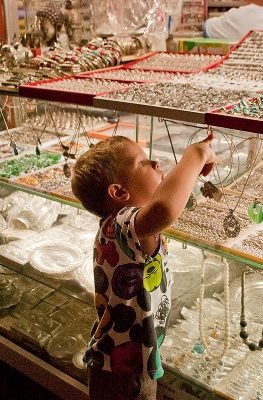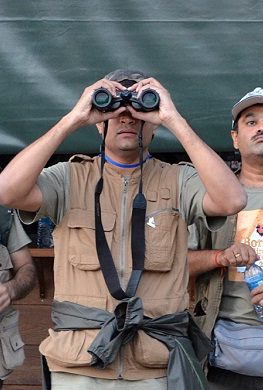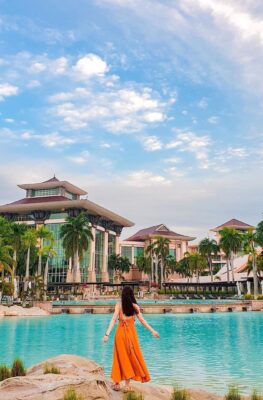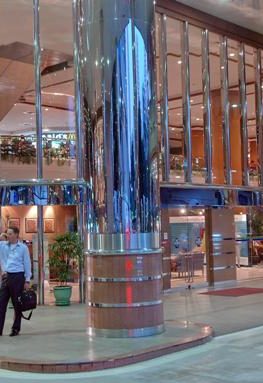Published on December 8, 2014
Both Islam and Malay heritage intertwined provide the basis for Brunei’s culture; see both up close in the country’s museums and mosques.
1.1. Urban Heritage Tourism
The collections in Brunei’s museums reveal the nation’s long and storied past, as told through regalia, traditional instruments, and Malay technology.
1.1.1. Brunei Museum
The Brunei Museum contains five galleries covering the surprisingly broad scope of this compact nation’s history and aspirations. Highlights include a Traditional Culture Gallery that displays artifacts like traditional Brunei musical instruments and the dragon-mouthed cannon called bedil ; and an Oil and Gas Gallery that explores Brunei’s petroleum industry in loving detail.
The museum was erected on the hill of Kota Batu in Bandar Seri Begawan, once the site of a stone fort built by the 14th century Brunei Sultan Sharif; it’s only appropriate that a museum devoted to Brunei’s history and culture now stands on this spot. museums.gov.bn
1.1.2. Royal Regalia Museum
The Sultan of Brunei’s long reign is celebrated in the Royal Regalia Museum, set in the center of Bandar Seri Begawan. The exhibits in the Museum represent the Sultan’s life and rule, embodied in clothing, jewelry, weapons, and gifts by visiting eminences.
The golden chariot and crown jewels used in the Sultan’s coronation are kept here for display, as are photographs illustrating the use of the different artifacts on exhibit. One of the biggest exhibits in the museum is dedicated to the Sultan’s silver jubilee in 1992, houses a life-size model of the Sultan’s parade float, complete with mannequins representing his honor guard.
1.1.3. Malay Technology Museum
Located a short walk downhill from the Brunei Museum, the Malay Technology Museum shows how traditional Malay arts, crafts and technologies helped build Brunei to be the nation it is today. Three exhibition halls explore different aspects of traditional technology.
The first explores the architecture of water villages like Kampong Ayer; the second enumerates the traditional technologies used in water villages, like brass casting, weaving and boat construction; and the third looks at the traditional architecture and technologies of inland peoples like the Dusun, Kedayan and Punan.
1.2. Islamic Tourism (Spiritual Tourism)
Explore Brunei’s deep Muslim cultural roots when you visit its grand mosques – built by Sultans in their role as protectors of Islam.
1.2.1. Sultan Omar Ali Saifuddien Mosque
The late Sultan of Brunei Omar Ali Saifuddien III ordered the construction of this ornate mosque that now bears his name. Completed in 1958, the Sultan Omar Ali Saifuddien Mosque now attracts visitors to Bandar Seri Begawan, who come to admire the gold-covered main dome and the mosque interior’s luxurious details. The SOAS Mosque bears influences from both Mughal and Italian architectural schools, the latter most evident in a 3.5-million-piece Venetian mosaic that lines the inside of the main dome.
An artificial lagoon beside the mosque contains a replica of a 16th-century royal barge, finished in 1967 to commemorate the 1,400th anniversary of the day when the Qur’an was first revealed to the Prophet Muhammad.
1.2.2. Jame’ Asr Hassanil Bolkiah Mosque
The present Sultan of Brunei ordered the construction of the Jame’Asr Hassanil Bolkiah Mosque to commemorate the 25th anniversary of his reign. Many of the mosque’s architectural features pay tribute to aspects of the Sultan’s rule – for instance, the 29 golden domes point to the Sultan being the 29th of his dynasty.
Superlatives are part of the Jame’Asr Hassanil Bolkiah Mosque’s design – the largest mosque in Brunei, its expansive prayer halls are covered in hand-painted tiles, quarried stone, and 24-carat gold. After dark, floodlights transform the mosque exterior into a glowing, golden jewel set against the night sky.






